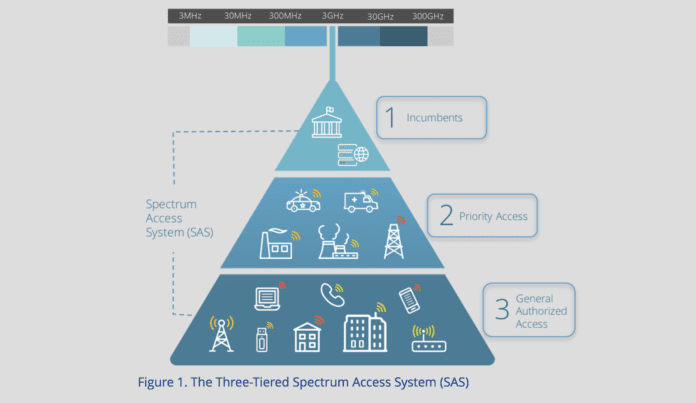Projecting 5G CBRS deployments in the first half of 2020
Back in March, the CBRS Alliance said it will incorporate support for the 5G New Radio standard over shared 3.5 GHz Citizens Broadband Radio Service spectrum. The technical details are set for inclusion in its upcoming Release 3 which is due for completion in the fourth quarter. With an eye on commercial 5G NR-based CBRS deployments in the first-half of 2020, stakeholders hit a milestone this week with the WinnForum lending its support to the necessary air interfaces.
In its current form, CBRS is an LTE technology that allows for shared access to the valuable mid-band spectrum in the United States. The U.S. Federal Communications Commission recently gave the OK to the environmental sensing capability (ESC) component of CBRS and is still testing the spectrum access system needed to govern three-tired shared access to the spectrum. The SAS lets devices access the CBRS band and the ESC, a network of coastal sensors, detects incumbent use of the band by naval radar systems.
As it relates to LTE, analyst firms Maravedis and EJL Wireless recently partnered on a market analysis. According to Adlane Fellah of Maraverdis, there are two segments poised for early adoption. “The first segment is for private LTE networks for secure mission critical IoT and voice/data applications that do not require any public access. The second segment is pretty much all other enterprises that need a combination of both private LTE as well as public access connectivity. The early adopters of private LTE over CBRS will be hotels/casinos, public venues, warehouses, and industrial/manufacturing.”
Back to this movement with the WinnForum, CBRS Alliance Executive Director Alan Ewing called it “very exciting. This is foundational to our strategic objective to see the first 5G deployments in U.S. mid-band spectrum. With 4G today and 5G coming soon, we’re ensuring the maximum return on investment for all CBRS ecosystem players.”
5G launches in the U.S. are primarily using millimeter wave spectrum, which provides the high-capacity users expect albeit with limited propagation. Sprint is using its 2.5 GHz spectrum to offer 5G services. In most other geographies, operators are using mid-band frequencies, largely in the neighborhood of 3.5 GHz, for 5G. This is certainly the early days of commercial 5G but the ultimate goal is to take a low-, mid-, high-band approach to provide the right balance of coverage and capacity–case in point, T-Mobile’s desire to combine its 600 MHz and millimeter wave holdings with Sprint’s mid-band portfolio.
In a February blog post, Federated Wireless Vice President of Legal Advocacy Jennifer McCarthy discussed the broader role of the SAS developed for CBRS in future 5G spectrum management. “The legacy ‘clear-and-auction’ approach to spectrum management is not sustainable…Spectrum sharing technologies must be leveraged to achieve this. The framework developed for CBRS is a testament to how sharing technologies can be used to support varied applications in a single band, balancing the needs of federal users, incumbents, new licensed users, and unlicensed users.”
Federated developed the SAS technology that makes sharing the band possible. While CBRS is unique to the U.S., the company sees opportunities around the world to implement spectrum sharing. In a May interview, Federated CEO Iyad Tarazi said the company is engaged with regulators in about 20 countries. “Our intention is to start the global discussion after the full commercialization in the U.S.”

